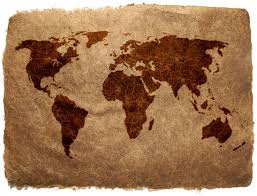 | | British Columbia |  | |
 Introduction: British Columbia is the westernmost of Canada's provinces and is known for its natural beauty, as reflected in its Latin motto, Splendor sine occasu ("Splendour without Diminishment"). Its name was chosen by Queen Victoria in 1858. In 1871, it became the sixth province of Canada. As well as being the westernmost province of Western Canada, British Columbia is also a component of the Pacific Northwest, along with the US states of Oregon and Washington. The capital of British Columbia is Victoria, the 15th largest metropolitan region in Canada. The largest city is Vancouver, the third-largest metropolitan area in Canada, the largest in Western Canada, and the second largest in the Pacific Northwest. In 2009, British Columbia had an estimated population of 4,419,974 (about two and a half million of whom were in Greater Vancouver). The province is currently governed by the BC Liberal Party, led by Premier Christy Clark, who became leader as a result of the party election on February 26, 2011. British Columbia's economy is largely resource-based. It is the endpoint of transcontinental highways and railways and the site of major Pacific ports, which enable international trade. Less than five percent of its land is arable; the province is agriculturally rich (particularly in the Fraser and Okanagan Valleys) because of its mild weather. Introduction: British Columbia is the westernmost of Canada's provinces and is known for its natural beauty, as reflected in its Latin motto, Splendor sine occasu ("Splendour without Diminishment"). Its name was chosen by Queen Victoria in 1858. In 1871, it became the sixth province of Canada. As well as being the westernmost province of Western Canada, British Columbia is also a component of the Pacific Northwest, along with the US states of Oregon and Washington. The capital of British Columbia is Victoria, the 15th largest metropolitan region in Canada. The largest city is Vancouver, the third-largest metropolitan area in Canada, the largest in Western Canada, and the second largest in the Pacific Northwest. In 2009, British Columbia had an estimated population of 4,419,974 (about two and a half million of whom were in Greater Vancouver). The province is currently governed by the BC Liberal Party, led by Premier Christy Clark, who became leader as a result of the party election on February 26, 2011. British Columbia's economy is largely resource-based. It is the endpoint of transcontinental highways and railways and the site of major Pacific ports, which enable international trade. Less than five percent of its land is arable; the province is agriculturally rich (particularly in the Fraser and Okanagan Valleys) because of its mild weather. | |
|
| Its climate encourages outdoor recreation and tourism, though its economic mainstay has long been resource extraction, principally logging and mining. While the coast of BC and certain valleys in the south-central part of the province have mild weather, the majority of BC's land mass experiences a cold winter temperate to subarctic climate similar to the rest of Canada. |
More Pictures:
You have read this article with the title
. You can bookmark this page URL https://tiogatalk.blogspot.com/2012/03/british-columbia-vancouver-introduction.html. Thanks!
Write by:
AN -
Tuesday, March 6, 2012










Comments " "
Post a Comment